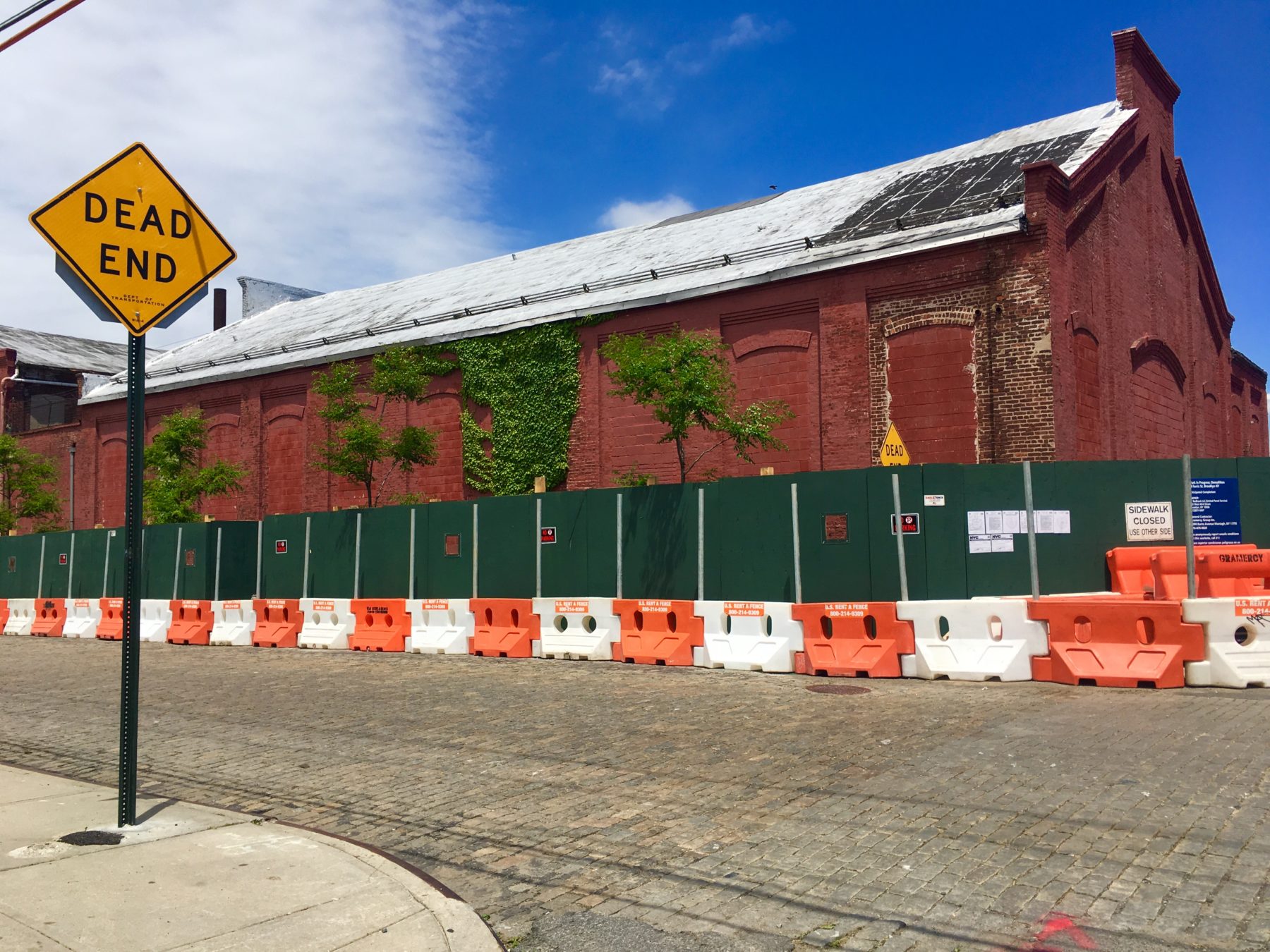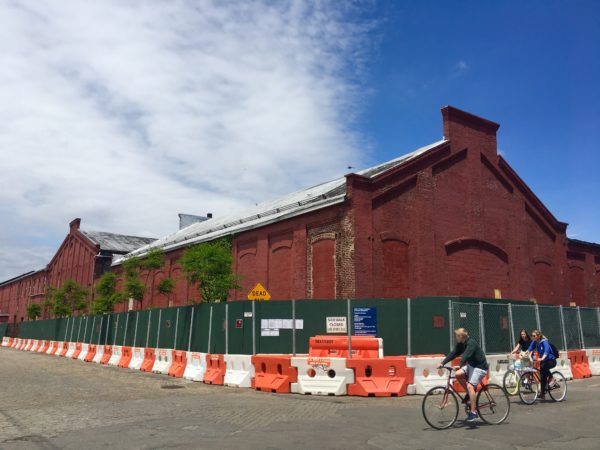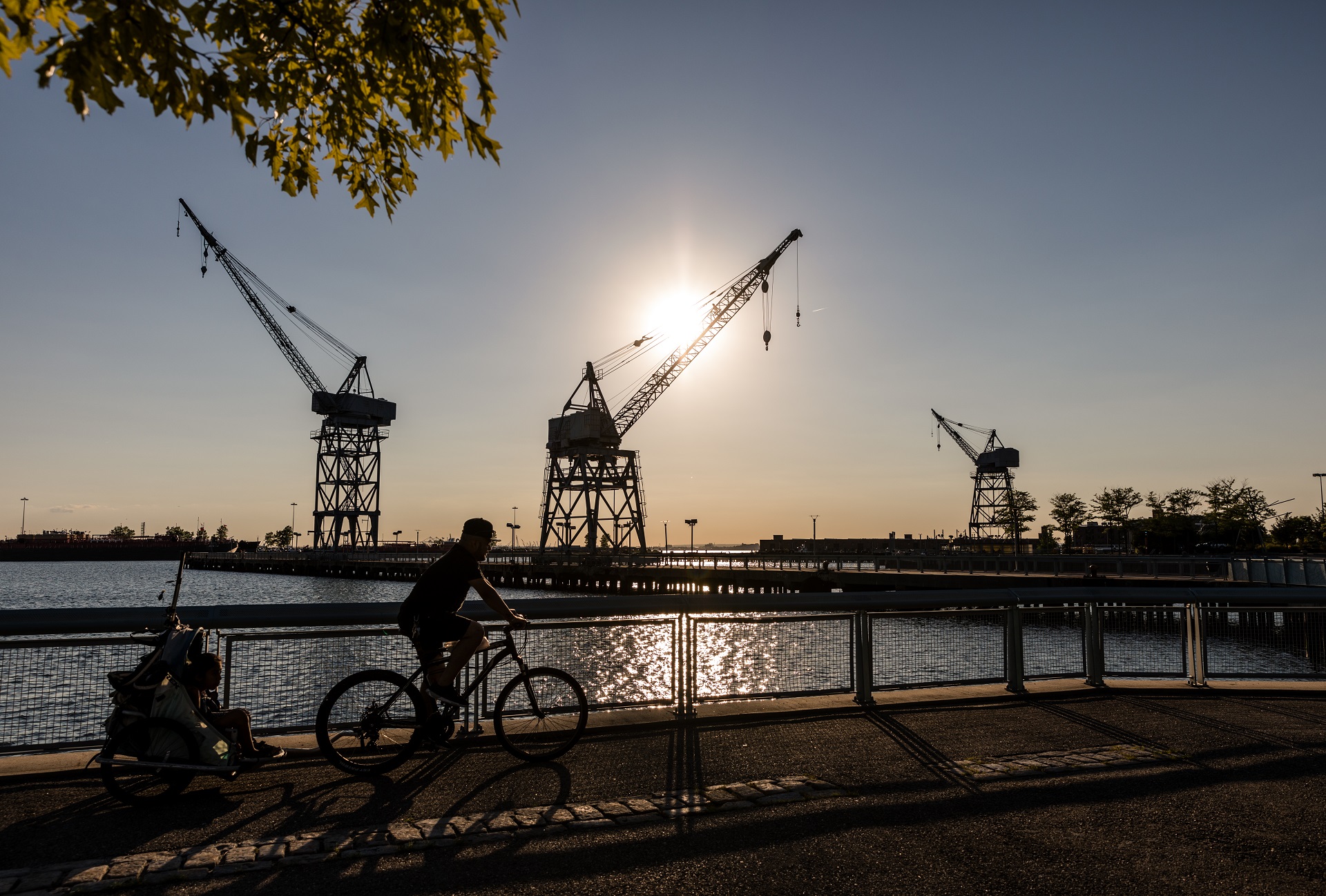Floating museums and 19th-century storehouses: The Red Hook I cherish
Eye on Real Estate: RIP Lidgerwood Building

Take a long look now before UPS tears down this part of Red Hook’s historic Lidgerwood Building. Eagle photo by Lore Croghan
This could be your last chance to see the Lidgerwood Building. Take a good, long look.
On the Friday of Memorial Day weekend, when many Brooklyn residents were headed out of town, UPS started tearing down the former foundry at 202 Coffey St.

The package-delivery giant decided to bulldoze the 1880s red-painted brick factory without speaking to community activists who wanted to discuss ways to save the building facade closest to Louis Valentino Jr. Park and Pier.
